Experience “The Big Five” in Africa
12.09.2017 | updated: 01.02.2024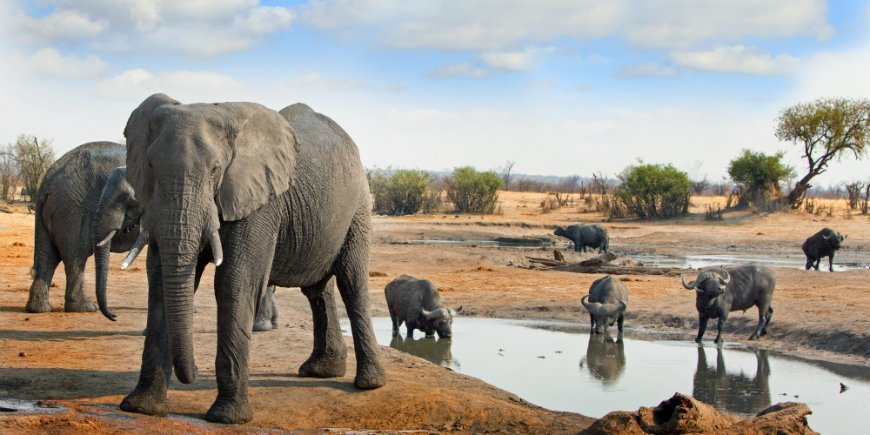
Many people go on safari in Africa to spot and take pictures of “The Big Five”, and you have probably heard the term before.
But do you know what “The Big Five” means? And why is “The Big Five” such a special thing to experience on a safari tour?
What is “The Big Five”?
“The Big Five” is a synonym for these animals: the lion, the leopard, the elephant, the rhino and the buffalo.
It is an ancient hunting term used by big game hunters which has nothing to do with the physical size of the five animals, but the level of difficulty and the danger involved in hunting these animals. Today, the term is also used in conjunction with safari.
What characterises “The Big Five” animals?
“The Big Five” are very different animals, but all of them are high on the list of people’s must-sees in Africa. Below you can learn more about each of them.
The lion
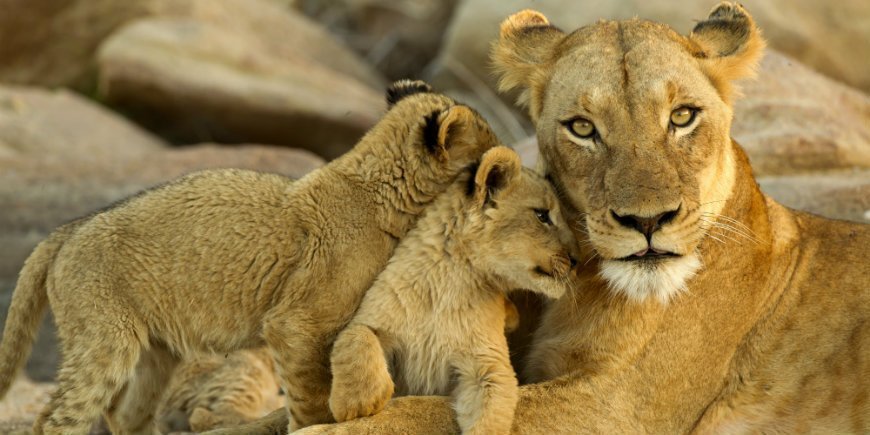
The lion is often synonymous with safari, and is therefore perhaps the most popular of “the Big Five”.
Some 20,000 lions live in Africa today, and you can see them in Tanzania and South Africa, to name but two countries.
- Lions live in prides of 2 to 30 animals. A pride typically consists of 2–4 adult males, 10–15 females and their cubs.
- The females remain in the pride all their lives, while the males are forced to leave the pride when they begin to compete with the pride’s alpha male.
- The preferred prey of the lion is medium-sized mammals such as gnus, zebras and larger antelopes. However, much of the lion’s diet consists of carrion stolen from other predators.
Did you also know that: an old lion is a rare sight as lions often die in battle before reaching a high age? Lions in the wild typically live to around 10–14 years, while in captivity they can reach the age of 20.
The lion can most often be spotted on the savannah and in open grasslands. In the middle of the day, when it’s hottest, they usually find a shady spot to rest.
The leopard
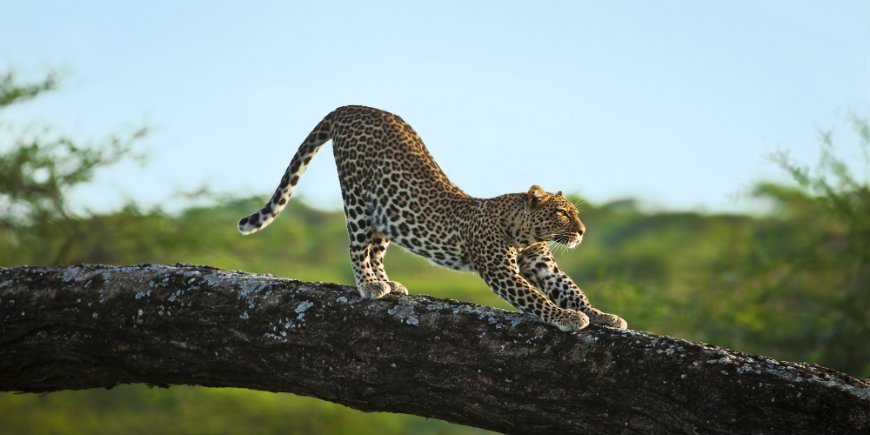
The leopard is a graceful cat known, among other things, for its spots.
The leopard lives in most parts of Africa, but it is shy of humans, making it hard to spot.
- Unlike the lion, the leopard lives alone, except when it has cubs.
- The leopard can be found both on the ground and in trees. It is most active at night and therefore spends most of the day sleeping in a tree or bush.
- The leopard eats everything from beetles to antelopes, however it prefers prey of its own size, dragging it up into a tree to prevent other predators from stealing it.
Did you also know that: Female leopards are good mothers? The female hides her cubs and moves them to safe places until they are old enough to learn to hunt.
The leopard is a master of concealment, but you might be lucky enough to spot it in deserts, on the savannah and in forests.
The elephant
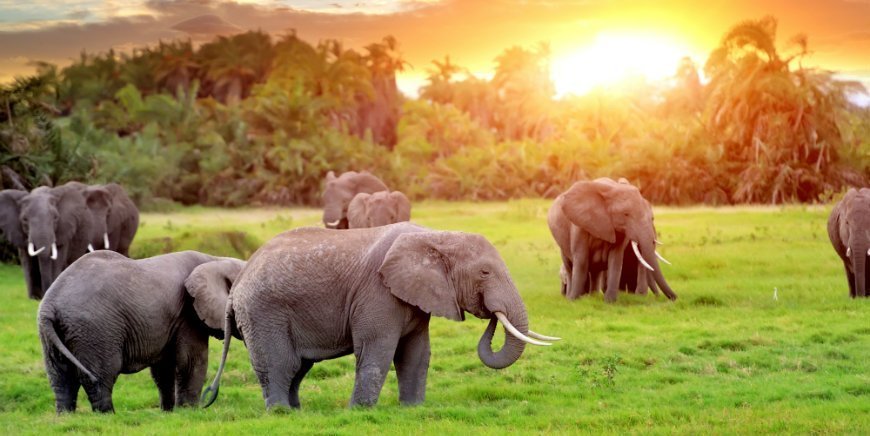
The African elephant (the savanna elephant) is the largest (and heaviest) land animal in the world, weighing on average 6,000 kg (and some up to 7,000 kg) In addition to its size, the elephant is known for its well-developed tusks.
Today, there are around 415,000 elephants in Africa.
- Elephants live in family groups of female elephants and their young. It is not uncommon to spot herds of more than 20 elephants.
- Females are pregnant for 22 months, and the females in the same herd can suckle each other’s young.
- An elephant gets six sets of molars in its upper and lower jaws. When the last set is worn, the elephant cannot chew its food and often dies of starvation. The African elephant can live for up to 70 years in the wild.
Did you also know that: The African elephant can eat 150 kg of food a day?
Elephants are widespread in Africa, so you have a chance of spotting one on the savannah and in dense forest.
The rhino
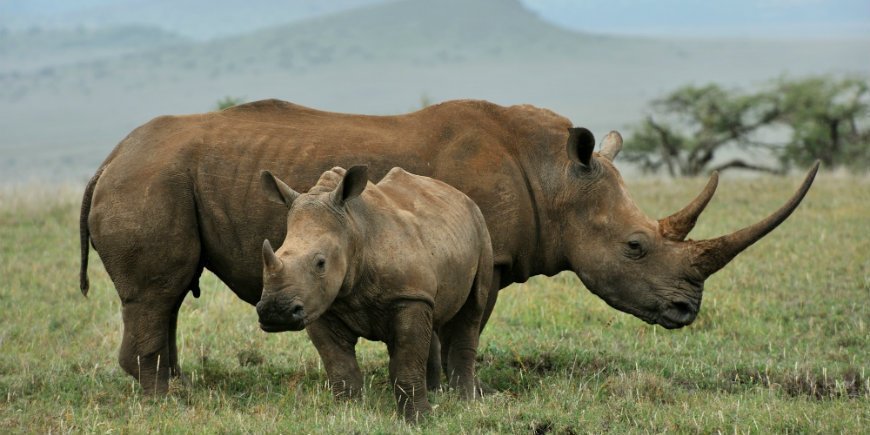
There are two kinds of rhinos in Africa: the black rhino and the white rhino.
Despite the name, both rhinos are grey, but the difference lies in the shape of their lips. Where the black rhino has prominent lips, the white rhino has wide, squared lips. The lips are crucial to what they eat.
Rhinos are the most endangered of “the Big Five”. The horns are coveted in Asia and the Middle East because they are said to have healing effects, making them worth a lot of money.
The black rhino
The black rhino is found in the south and east of Africa, including Kenya, Tanzania, Namibia, South Africa and Zimbabwe.
The black rhino is highly endangered, and figures from the International Rhino Foundation estimated in 2022 that there are just over 6,000 of the rhino species left in Africa.
- It is the smallest of the two African species and can weigh up to 1,350 kg.
- These rhinos are “browsers”, which means that they only eat food that is not on the ground, i.e. trees and bushes.
- The front horn is on average around 50 cm long, but it can grow up to 130 cm.
Did you also know that: The black rhino can move very fast and can reach a top speed of 55 km/h?
The black rhino like to be where there are lots of bushes and other food, e.g. in forest areas, savannah and wetlands.
The white rhino
The white rhino primarily lives in South Africa, but can also be found in countries including Kenya, Namibia and Zimbabwe.
It is less endangered than the black rhino and there are some 16,000 animals left in Africa.
- White rhino males can weigh up to 2,700 kg, making them the largest land animal in the world after the elephant.
- The white rhino eats grass, aided by its wide, squared lips, making it a good “grazer”.
- The horns are used for fighting and protection. The front horn is on average around 60 cm long, but it can grow as long as 150 cm.
Did you also know that: The white rhino name stems from Afrikaans, which referred to the rhino’s lips as wide (“wyd”), which was later mistranslated to “white”?
As the white rhino is less endangered than the black rhino, you are more likely to see it in Africa. The white rhino usually resides on grasslands and on the savannah.
The buffalo
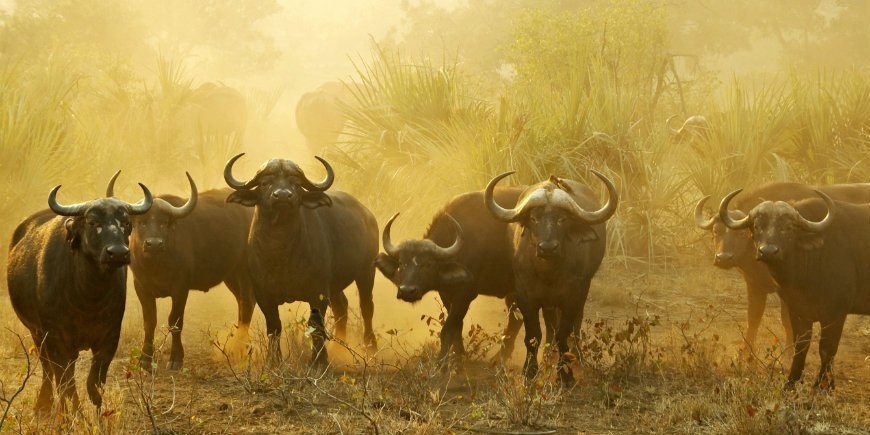
The buffalo is a large animal, reminiscent of the cow. It lives in large numbers in most of Africa, and it is possibly the most dangerous of “the Big Five” to man.
- The buffalo is a social animal that lives in large herds of 50 to 500 animals. However, the number can increase to several thousand during the rainy season in the Serengeti in Tanzania. Predators are less likely to attack such large herds.
- The females generally give birth to their calves towards the end of the rainy season, increasing the chance of survival as there is more food and water.
- A buffalo is most likely to attack if it is alone or injured because it feels threatened. This attack strategy has helped give the animal its reputation of being aggressive.
Did you also know that: The buffalo is not a territorial animal? However, it will fight for better rank in the herd and to win the favour of female buffaloes.
If you want to see the buffalo, you need to look for it in forest areas and on the savannah.
How can you see “The Big Five”?
If you wish to see “The Big Five”, you can travel to popular safari destinations such as Tanzania, Kenya and South Africa. In addition, you can see one or more of “the Big Five” in all our destinations in Africa.
There are many beautiful and well-known national parks where you can be lucky enough to experience one or more of the “Big Five” animals.
During your tour, your safari guide will do everything he/she can to make sure you see all five animals. Some of the animals can be difficult to spot, so you need to keep your ears open and your eyes peeled!
If you have any questions, please contact our travel consultants. They can guide you to the best destination for you.
TourCompass – From tourist to traveller
